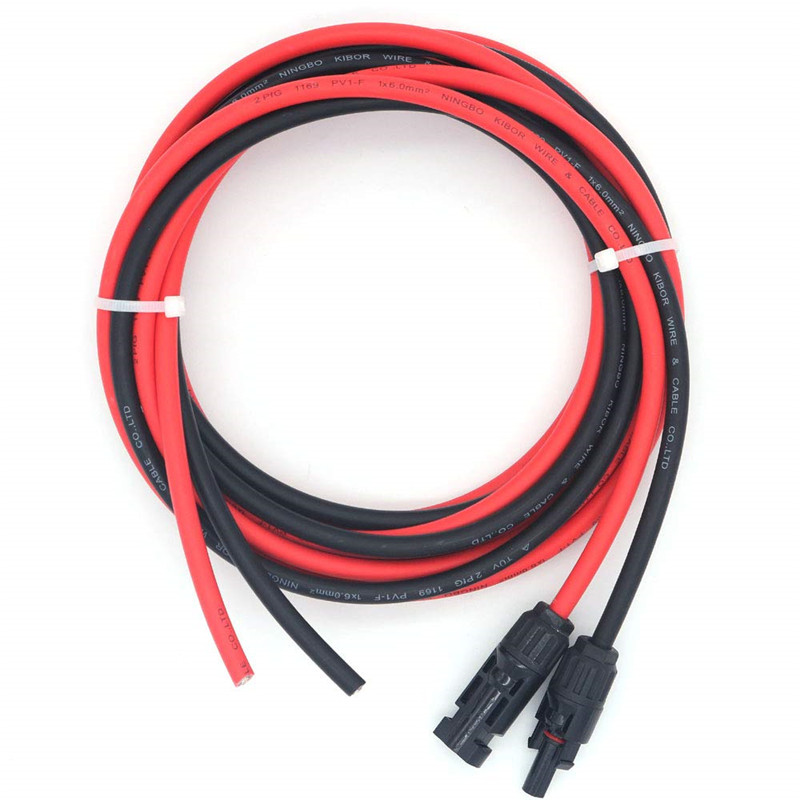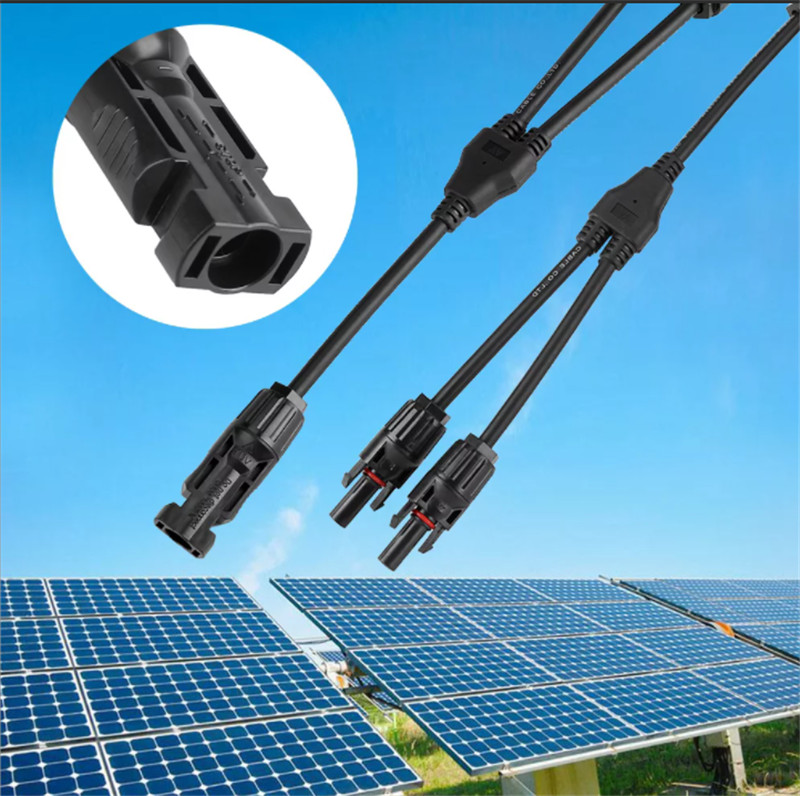

Solar panels: Cables and connectors
The solar system is an electronic system, the different parts of which must be connected together in some way. This connection is similar to the way other electrical systems are connected, but very different.
Solar power cable
Solar cables or PV cables are wires used to connect solar panels and other electronic components such as solar controllers, chargers, inverters, etc., using them. The choice of solar cable is critical to the health of the solar system. The right cable must be selected, otherwise the system will not work properly or be damaged prematurely, and the battery pack may not charge well or at all.
Design
Since they are usually placed outdoors and in the sun, they are designed to be weather resistant and operate over a wide range of temperatures. They are also designed to resist ultraviolet light produced by the sun and visible light.
They are also insulated to prevent short circuits and ground failures.
MC4 Cable
The rating
These cables are usually rated for the maximum current (in amperes) that passes through the wire. This is a major consideration. You cannot exceed this rating when choosing a PV line. The higher the current, the thicker the PV line required. If the system is going to produce 10A, you need 10A lines. Or slightly above but never below. Otherwise, a smaller wire rating will cause the voltage of the panel to drop. The wires could heat up and catch fire, causing damage to the solar system, domestic accidents and, most certainly, financial damage.
Thickness and length
The power rating of a solar cable means that a higher power PV line will be thicker, and in turn, a thicker PV line will cost more than a thinner one. The thickness is necessary given the area's vulnerability to lightning strikes and the system's vulnerability to power surges. In terms of thickness, the best choice is a thickness that is compatible with the highest current pull-out device used in the system.
Length is also a consideration, not only for distance, but because a higher power cord is required if the PV line is longer than average and connected to a high current appliance. As the length of the cable increases, so does its power rating.
In addition, the use of thicker cables will allow high-power appliances to be incorporated into the system in the future.
connector
Connectors are needed to connect multiple solar panels into a string. (Individual panels do not require connectors.) They come in "male" and "female" types and can be photographed together. There are many types of PV connectors, Amphenol, H4, MC3, Tyco Solarlok, PV, SMK and MC4. They have T, U, X or Y joints. The MC4 is the most commonly used connector in the solar energy systems industry. Most modern panels use MC4 connectors.
Post time: Nov-23-2022



